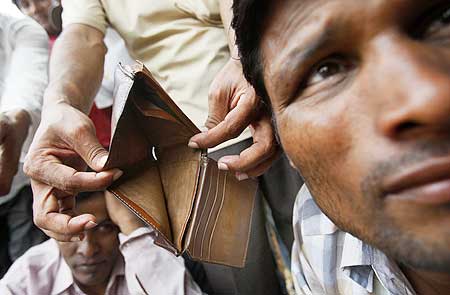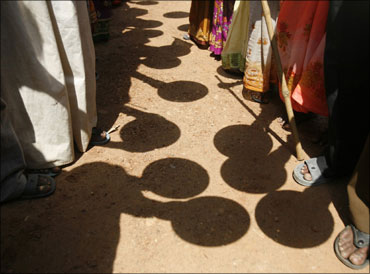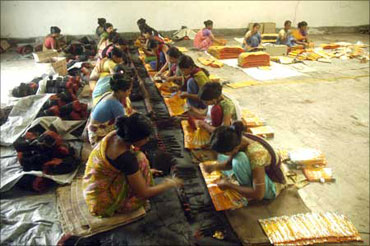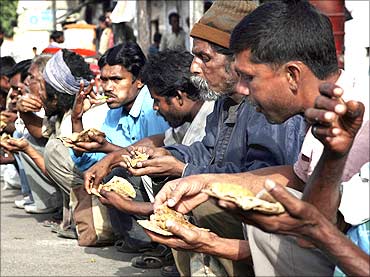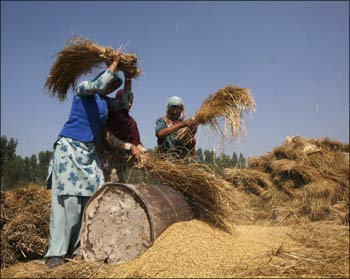 | « Back to article | Print this article |
Malegam panel caps MFI interest at 24%
The Malegam Committee, set up by Reserve Bank of India on Wednesday recommended a 24-per cent interest rate cap on microfinance loans to individuals.
It also suggested creating a new category of non-banking finance companies: NBFC-MFI.
The committee said that to qualify as an NBFC-MFI, an NBFC should provide financial services predominantly to low-income borrowers.
Click NEXT to read further. . .
Malegam panel caps MFI interest at 24%
To promote financial inclusion, it has asked for lending to this sector to be treated as priority-sector lending.
The panel has suggested that its recommendations be enforced by April 1.
To qualify as an NBFC-MFI, a lender must hold no less than 90 per cent of its total assets in the form of qualifying assets.
This excludes cash & bank balances and money-market instruments.
Also, the annual income of a family should not exceed Rs 50,000 and there should be an individual ceiling of Rs 25,000 on loans to a single borrower.
Click NEXT to read further. . .
Malegam panel caps MFI interest at 24%
To mitigate problems like multiple-lending, over borrowing and coercive recovery, the committee recommended a variation in the tenure of loans and commencement recovery. Also, that at most two MFIs should lend to a single borrower.
It suggested a minimum moratorium between the disbursement of a loan and recovery. The pattern of repayment can depend on the nature of the loan.
The schedule can be weekly, fortnightly or monthly, depending on the borrower.
"NBFC-MFIs should be exempted from state Money Lending Acts, and also that if the recommendations of the committee are accepted, the need for the Andhra Pradesh Micro Finance Institutions (Regulation of Money Lending) Act will not survive," the report said.
Click NEXT to read further. . .
Malegam panel caps MFI interest at 24%
The Andhra Pradesh government had passed legislation to bring down abusive practices adopted by MFIs operating in the state.
For this, it has proposed setting up fast-track courts in every district for MFI-related issues.
The committee cautioned industry on the need to protect borrowers.
It said if the recovery culture is adversely affected and free flow of funds interrupted, the ultimate sufferers would be borrowers, as the flow of fresh funds to the microfinance sector will inevitably be reduced.
The committee has recommended an average margin cap of 10 per cent for MFIs with a loan portfolio of Rs 100 crore (Rs 1 billion) and of 12 per cent for smaller MFIs.
Click NEXT to read further. . .
Malegam panel caps MFI interest at 24%
The committee suggested that the interest rate should be capped at 24 per cent on individual loans and all loans should be without collateral.
Smaller MFIs charge up to 32 per cent, although most of the large MFIs, including SKS Microfinance and Spandana Sphoorty, charge 24 per cent.
MFIs will be allowed to levy only three charges: Processing fee, interest and insurance charge.
A Prasad, chief executive of industry body Micro Finance Institution Network, said the cap on spread and interest rate is broadly in line with the sector's stance.
"Many MFIs had already cut interest rates. But smaller players may find it challenging to work with the proposed recommendations."
Click NEXT to read further. . .
Malegam panel caps MFI interest at 24%
To bring down defaults, the committee recommended setting up one or more credit information bureaus.
Primary responsibility will lie with an MFI and its management, so if coercive methods are used, managements should be severely penalised, the committee suggested.
All MFIs would have to observe a specified code of corporate governance.
Experts believe that the new regulatory norms will trigger consolidation in the industry.
"Those looking to enter to make high profits quickly would have to rethink their plans. This sector needs mission focus due to social factors," said a senior executive working with an MFI.
